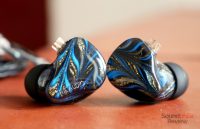When I started writing this blog, there were virtually no planar in-ear headphones. The only model that I recall being there, and even then appearing a while after I started writing, was the Audeze iSine. Since then there’s been a lot of improvement in the technology and planar in-ears are now not so exceptional. The RAPTGO HOOK-X do not content themselves with using a planar driver, as they pair it with a piezoelectric driver that takes care of the upper range of frequencies. With results that I would define “mixed”.
Disclaimer: I received this unit free of charge from Linsoul. The RAPTGO HOOK-X retail for $239.
TL;DR: recap
| Pros |
Cons |
| + Loads of accessories
+ Smart cable system + Great level of detail + Very pleasant tuning in the bass and midrange areas |
– Fatiguing treble due to spikes
– Shells could be a bit large for some |
Rating: 7/10
Packaging & Accessories
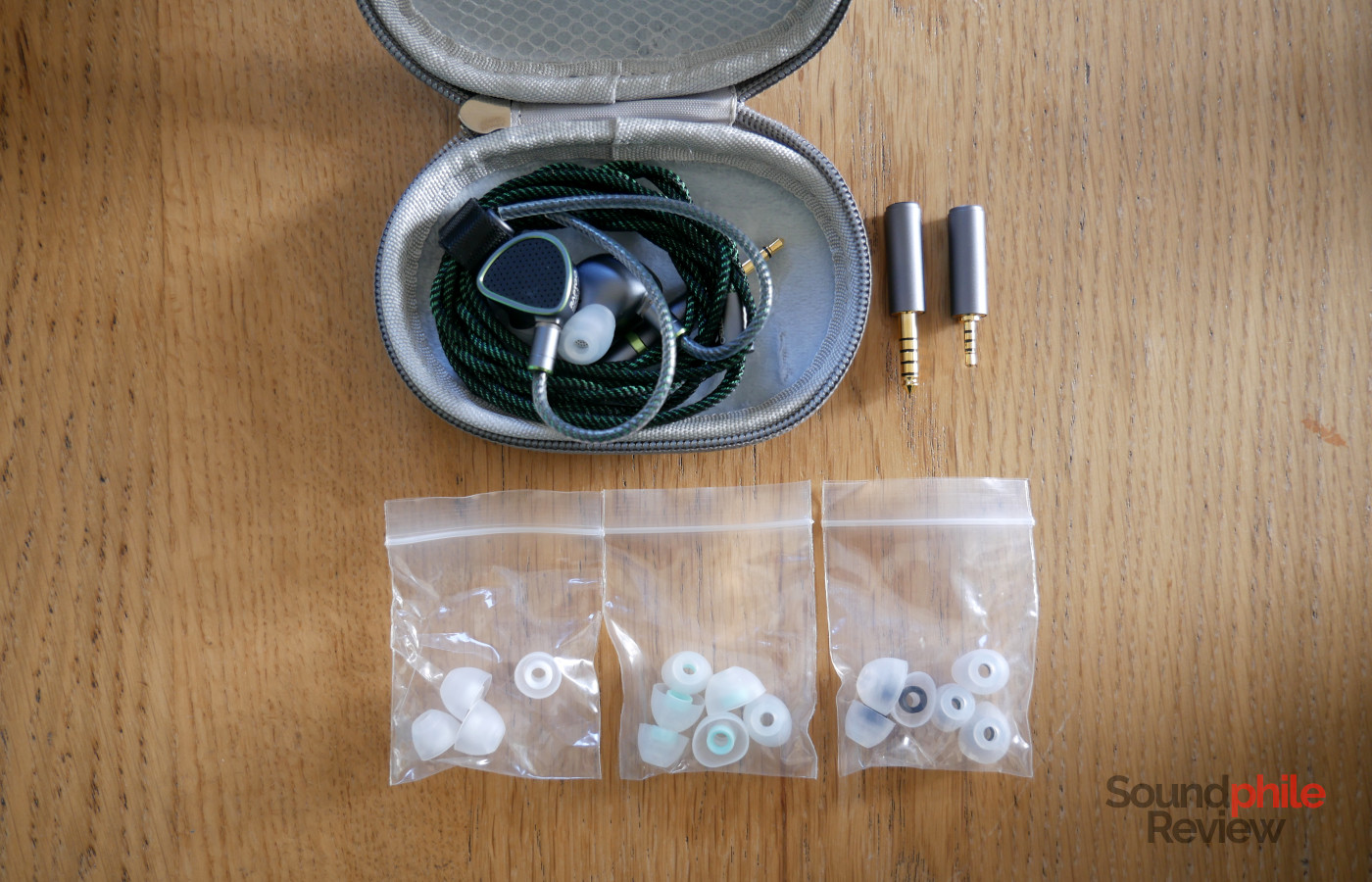
RAPTGO certainly knows how to impress with the unboxing experience. While the box itself is nothing special, they offer quite a lot of accessories, including a hard travel case and three different sets of eartips (in three sizes each!). These eartips are clones of Spinfit tips, so they offer most of the same advantages as those, though they are made with stiffer silicone that is not as comfortable. SpinFit also told me this is an unauthorized rip-off of their design that they have decided to take to court, so we’ll see how that goes.
Design & Comfort
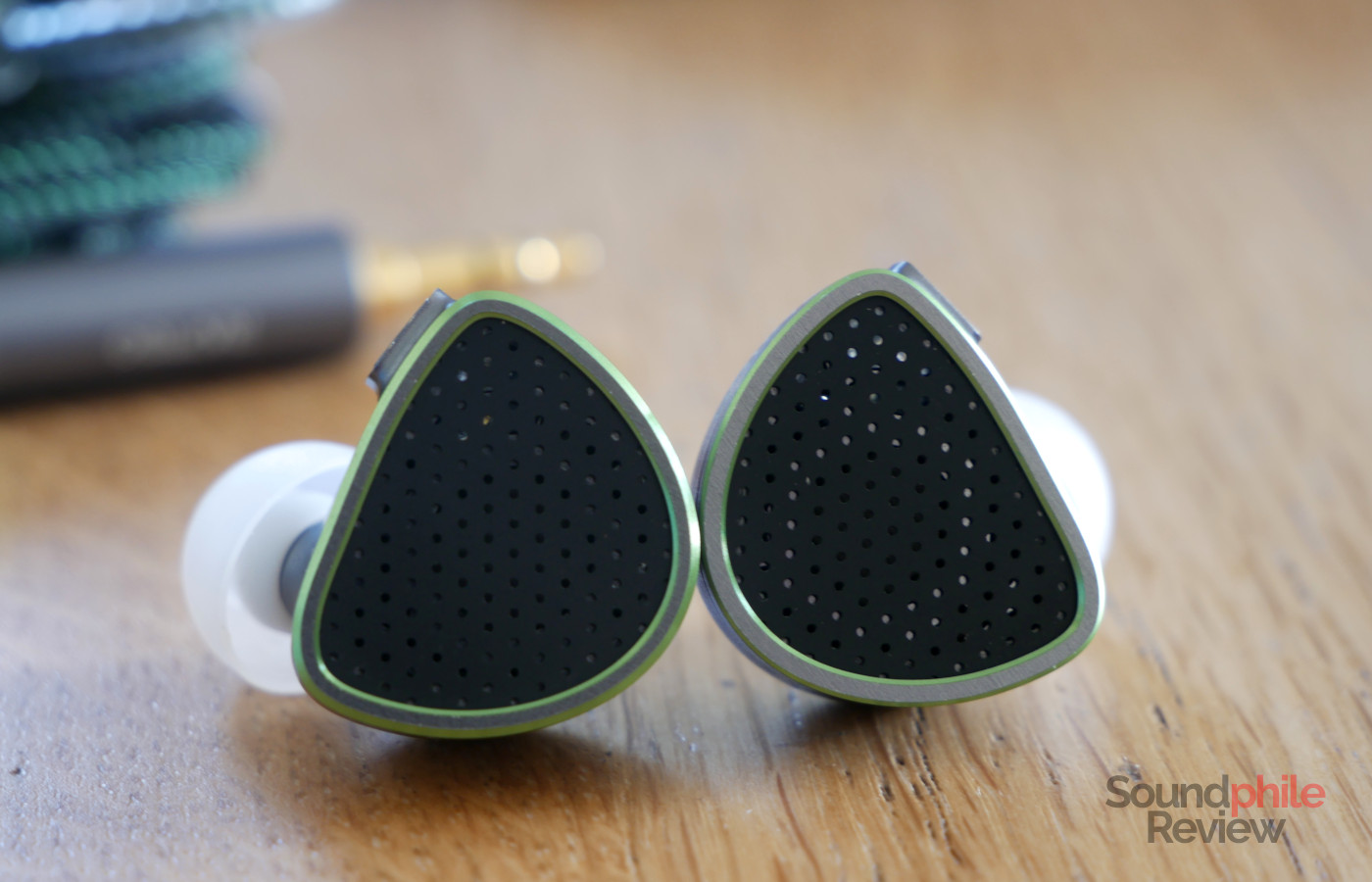
The RAPTGO HOOK-X use the classic in-ear monitor type of design, with a triangular shape and an angled nozzle. They’re quite large, but mostly in terms of depth, so they should fit comfortably in most people’s ears (more on that later). The design itself is nothing special as the faceplates are pieces of metal with holes in them, which is hardly distinctive. The only concession to aesthetics is that the edges of the rims around the faceplates are bright green.
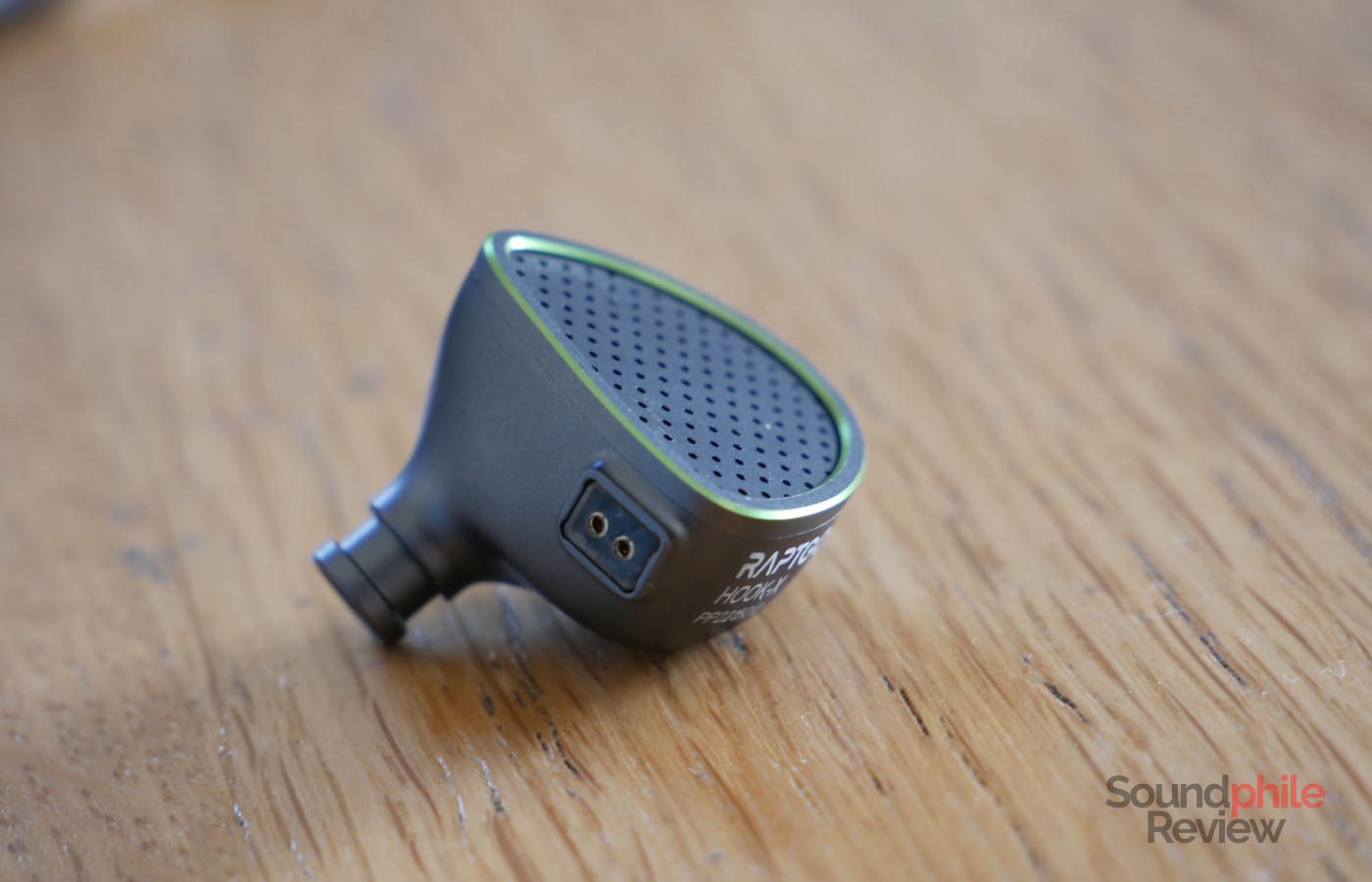
Build quality is very high and I can’t find any fault with it. The shells are entirely made of metal, which makes them very durable and resistant to the inevitable wear and tear.
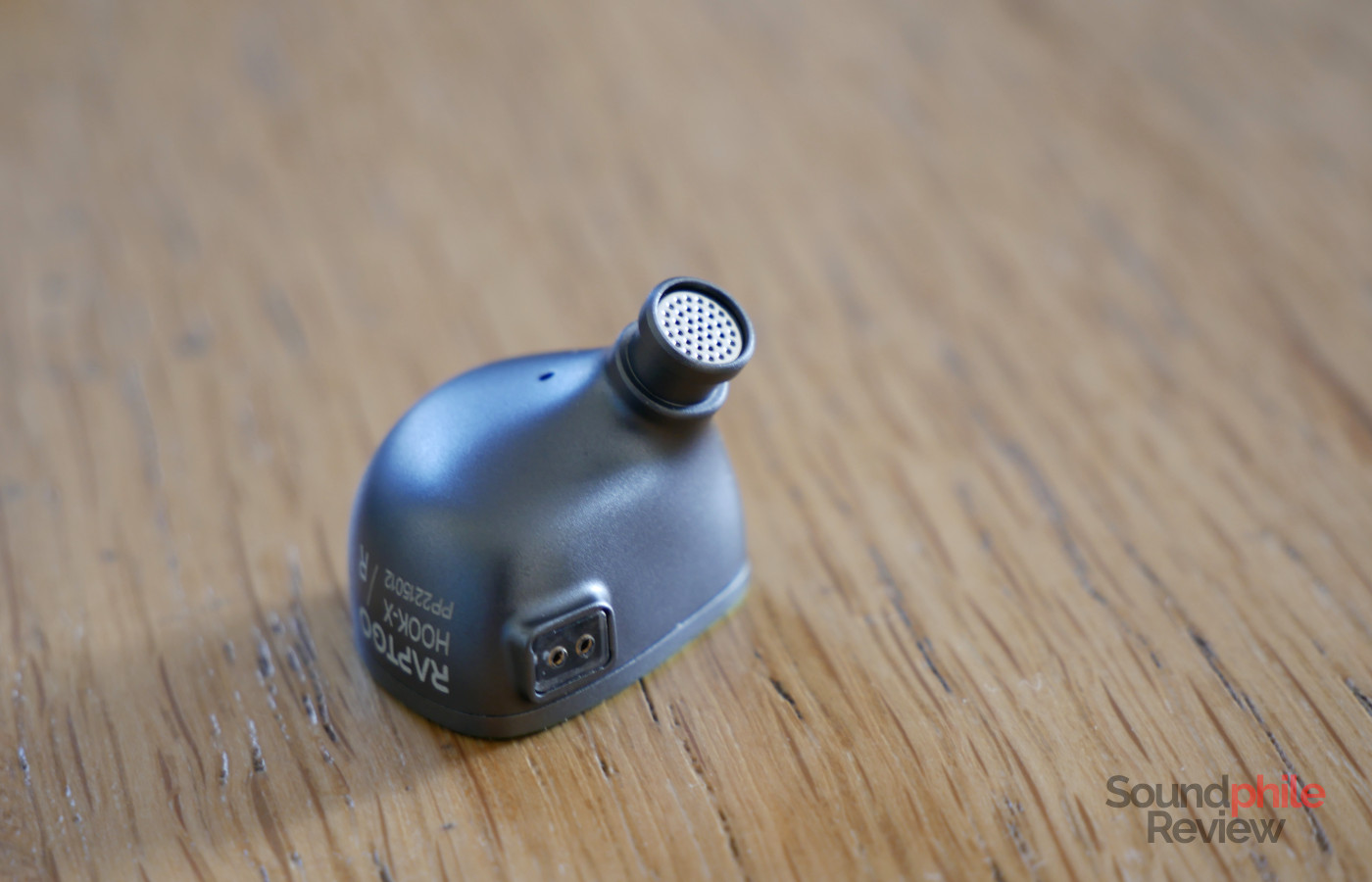
Comfort is probably going to be a divisive feature, as the large size of the shells will probably be a problem to some. I personally found comfort to be acceptable, though after wearing the HOOK-X for a while I do feel a bit of strain on my pinnae. Everyone’s experience is going to be different though, so it’s hard to give a general opinion on this.
As they are semi-open, the HOOK-X offer virtually no isolation whatsoever. They do offer minimal isolation, but it’s so little it’s barely noticeable.
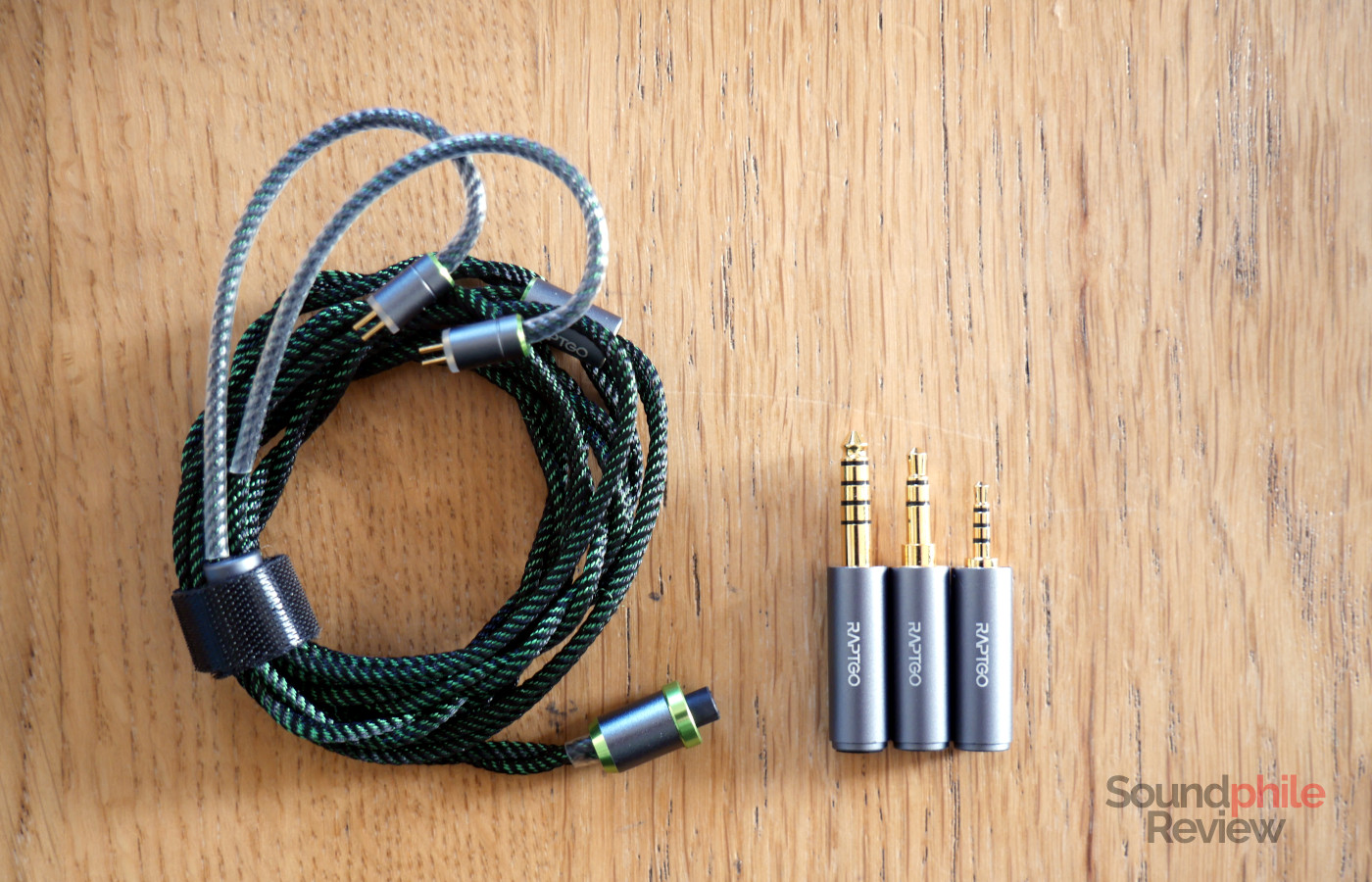
The cable is among the best stock ones I’ve found, mostly due to its flexibility. It uses an ingenious pin system to provide you with different terminations: 2.5 mm balanced, 3.5 mm unbalanced and 4.4 mm balanced. You can simply take an adapter off and put another one on, with no tools required and no locking mechanisms which would given in over time (see MMCX connectors as an example). The lack of a locking mechanism, though, isn’t a cause for concern as the connection is quite stable and it takes a bit of force to remove an adapter. The cable itself is seemingly made with two thick cores, one per channel, each individually sleeved in what appears to be nylon. The cable is quite soft and malleable, with very little microphonics. All the housings and the chin slider are made entirely of metal.
Sound & Specs
I have mostly tested the RAPTGO HOOK-X with a Drop THX AAA 789 fed by a Topping DX7.
RAPTGO HOOK-X |
| Frequency response | 20 – 40,000 Hz |
| Impedance | 15 Ω |
| Sensitivity | 105 dB |
I have yet to encounter earphones that manage to use the piezoelectric drive correctly, as in “without ending up being fatiguing”. Unfortunately this fate is shared by the HOOK-X, which have multiple significant peaks in the middle-treble area that can make them very fatiguing. This is a feature in common with the NiceHCK NX7 Pro, as an example.
Although they are open-back, or at least semi-open, the RAPTGO HOOK-X do not offer a very large soundstage; they give me a weird sensation, as if the stage went behind me a bit as well as to the sides, which makes the listening experience more immersive but also makes it a bit weird. Depth is reasonably good, but it appears to extend to the back rather than to the front. Imaging, on the other hand, is quite good and places instruments quite accurately, with a good variety of positions. Instrument separation is very good and allows you to distinguish the various instruments effectively, even in crowed tracks.
Bass is very close to neutrality and can actually sound a bit shy overall. It reaches its peak in the lower mid-bass area, but it has a very gentle slope so sub-bass is still quite well represented. In a way it reminds me of the bass found on Tin HiFi headphones in terms of how it’s tuned, so if you like that you’re going to like this one as well. The main difference is that bass on the HOOK-X is not quite physical and is possibly slightly more recessed, so it lacks the punch needed to make drums and other similar fast instruments stand out. On the other hand, though, bass is itself quite fast and this confers it quite a good agility, which in turn allows for quite a bit of detail to be showcased.
Detail is undoubtedly the best quality of midrange, which is really full of small details that pop out of the mix with enviable clarity. Music really does feel alive because of this! In terms of tuning, the mids have a bit of an additional accent on the upper region which makes it quite bright, but not fatiguing. It does colour the sound quite a bit though, and even low male voices sound less full-bodied because of this; female voices, on the other hand, sound more emphatic and lively. In general, mids are quite well positioned in the mix, though they are a bit overshadowed by treble.
Treble has multiple peaks in the middle region, specifically around the 8 kHz and 10 kHz marks, that are quite prominent and end up introducing fatigue in the sound. Cymbals and other high-pitched instrument quickly become sharp, on top of sounding tinny and lacking body. This is probably due to the use of the piezoelectric driver, which is specifically used to produce high frequencies, but I have no specific proof of that (I didn’t disassemble the earphones and unsolder the piezoelectric drivers…) so you should take it with a pinch of salt. Spikes aside, treble is quite nice as it has a very high level of detail coupled with great speed, which makes it quite pleasurable to listen to.
Final Thoughts
The RAPTGO HOOK-X are part of the latest wave of in-ear planar headphones. The planar part appears to be working as intended, with coherent bass and midrange that sound great, thanks to their good balance and great level of detail. On the other hand, treble can be a serious issue as it has quite significant spikes that can result in fatigue. As I said, I suspect that the culprit for these spikes is the piezoelectric driver, but I have no conclusive proof on that and it’s more of a sensation due to other earphones with piezoelectric drivers I have tried which exhibited very similar behaviour. On the positive side, the accessory set is great and the cable is one of the best I’ve seen in the sub-$500 range.
Overall, the RAPTGO HOOK-X are very likeable, but in my opinion they require equalisation to sound well. If you’re not intimidated by this, they can be quite a good companion for your listening sessions and their great level of detail is surely going to make many people happy.




